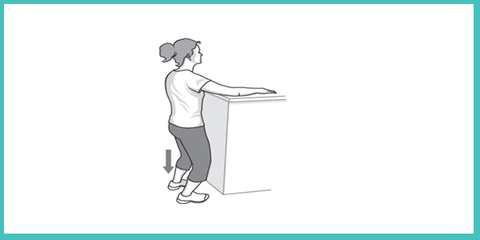
If at any given point you have experienced a frozen shoulder, you can attest that performing simple activities can be impossible. But what exactly is a frozen shoulder?
A frozen shoulder (adhesive capsulitis) is a painful condition causing shoulder stiffness with a significant loss of range of motion in all directions. This shoulder pain can become more severe over time, and one may not be able to move his/her shoulder at all.
There are a few facts associated with a frozen shoulder. These are as follows:
- Frozen shoulder occurs due to scarring, thickening, and shrinking of the joint capsule.
- About 6 to 17% of people with frozen shoulder get it in their other shoulder within five years.
- Nearly 3-5% of adults aged between 40-60 years might encounter a frozen shoulder condition at some time in their lifetime, and over 20% of people with diabetes.
This month’s guide comprehensively focuses on adhesive capsulitis nonsurgical treatments, symptoms, and causes to provide you with valuable insights into shoulder health and overall well-being.
Are you ready to get informed?
Frozen Shoulder Symptoms
Before getting into the actual treatment, let’s find out what a frozen shoulder looks like. Common condition symptoms of a frozen shoulder include pain, stiffness, swelling and immobility or shoulder movement limitation that often progresses through three stages as deduced through a physical exam:
- Freezing Stage. Movement of the shoulder becomes limited due to the pain inflicted. This stage lasts from 2 to 9 months.
- Frozen Stage. Pain might lessen during this stage. However, the shoulder becomes stiffer and lifting your hands over your head becomes more difficult. This stage lasts from 4 to 12 months.
- Thawing Stage. One can move the shoulder with ease hence the pain continues to improve. This stage lasts from 5 to 24 months.
Usually, a frozen shoulder goes away on its own within 1-3 years without any treatment.
Having in mind what a frozen shoulder looks like, let’s briefly highlight a few causes of a frozen shoulder.
Causes of a Frozen Shoulder
There is no clear cause of a frozen shoulder. Some people are more at risk than others. However, some medical conditions such as diabetes or heart disease have been linked to frozen shoulder. It is also more common in patients recovering from stroke or surgery that prevents both active and passive range movement of the shoulder for an extended period.
Inactivity leads to inflammation and the development of bands of tissue called adhesions, which leads to a frozen shoulder. Any injury or trauma to the area can also lead to the condition if scar tissue forms.
Next, we unlock the top secrets to frozen shoulder treatment.
Frozen Shoulder Treatment
The treatment for a frozen shoulder is focused on relieving pain and restoring the shoulder's normal range of motion. In most cases, your health care provider will develop your treatment plan to relieve pain and increase mobility after performing a physical examination. This plan may include the following:
Anti-inflammatory Medication
Pain relievers such as aspirin and ibuprofen (Advil, Motrin IB, others) can help reduce pain and inflammation associated with a frozen shoulder. In some cases, a health care provider might prescribe stronger pain-relieving and anti-inflammatory drugs to ease the connective tissue pain.
Corticosteroid Injection into the Shoulder Joint
Injecting steroid injections into the shoulder joint might help decrease pain and improve shoulder mobility, especially if given at the onset of a frozen shoulder.

Shoulder Manipulation.
This procedure involves a medication called a general anaesthetic where one is unconscious and feels no pain–manipulation under anesthesia. The care provider then moves the shoulder capsule in different directions to help loosen the tightened tissue. If you've had a shoulder injury or surgery, it's important to keep your shoulder as mobile as possible afterward.
Icing and Heat Therapy
Hot and ice therapies are great natural tools for relieving pain, especially when combined with other treatments such as massage.

Hot and ice therapy works well for pain relief because heat increases blood flow to areas where the pain is located, and the ice pack cools other parts of the body to bring down inflammation. However, cold packs may be less effective when used alone, depending on how much pain you're experiencing. Some patients find that combining both types of therapy provides greater pain relief.
Have you tried incorporating HEMPE Helps new natural gels that give hot and ice therapy? They have been independently assessed to get rid of pain so we can fully recommend that you try HEMPE Hot & Ice gels to massage your frozen shoulder.

Here is a related topic worth your time: A Guide to Natural Pain Relief
Range-of-motion exercises/physical therapy.
Physical therapy improves the range of motion of your health condition. Frozen shoulder usually originates due to inactivity, so a shoulder exercise programme can counteract this. A physical therapist gives you several exercises to both stretch and strengthen the joint. These movements may include reaching across your chest to touch the opposite shoulder or down your back to touch the opposite shoulder blade (the Apley scratch test).
As highlighted by Havard Health Publishing, these frozen shoulder stretching exercises may include the following:
1. Pendulum Stretch

This starts by relaxing your shoulders, standing and leaning over slightly, allowing the affected arm to hang down. Next, swing the arm in a small circle — about a foot in diameter, performing 10 revolutions in each direction, once a day. As your symptoms improve, increase the diameter of your swing without forcing a thing. When you're ready for more, increase the stretch by holding a lightweight (three to five pounds) in the swinging arm.
Note: Your commitment to doing these exercises is necessary to regain as much movement as possible.
2. Towel Stretch
Roll up a towel lengthwise holding the towel above and behind your head with the arm that is not sore. With your sore arm, reach behind your back and grasp the towel.
Using the arm above your head, pull the towel upward until you feel a stretch on the front and outside of your painful shoulder. Hold for 15 to 30 seconds, relax and move the towel back down to the starting position.

Repeat 2 to 4 times.
3. Finger Walk
Face a wall three-quarters of an arm's length away. Reach out and touch the wall at waist level with the fingertips of the affected arm. With your elbow slightly bent, slowly walk your fingers up the wall, spider-like, until you've raised your arm as far as you comfortably can. Your fingers should be doing the work, not your shoulder muscles. Slowly lower the arm (with the help of the good arm, if necessary) and repeat. Perform this exercise 10 to 20 times a day.
4. Cross-Body Reach

Grasp the elbow of your stiff shoulder in the opposite hand. Pull your elbow across your chest, toward the opposite shoulder. Hold the stretch for 15 to 20 seconds. Do this exercise 10 to 20 times per day.
5. Armpit Stretch

Using your good arm, lift the affected arm onto a shelf about breast-high. Gently bend your knees, opening up the armpit. Deepen your knee bend slightly, gently stretching the armpit, and then straighten. With each knee bend, stretch a little further, but don't force it. Do this 10 to 20 times each day.
6. Outward Rotation
As your passive and active range of motion improves, add rotator cuff tear–strengthening exercises. Be sure to warm up your shoulder and do your stretching exercises before you perform strengthening exercises.
With your injured side towards the wall, put the pillow between the wall and your elbow and stand with your feet about shoulder-width apart for balance. Keep your arm against your side and push your hand out towards the wall. Hold for 6 seconds. Repeat the exercise 10 to 15 times daily.
7. Inward Rotation
Stand at a corner of the wall or in a doorway so the inside of your injured arm is to the outside of the corner. If you use a pillow, place it between the wall and the palm. Keep your elbow in and at your side, pushing your hand into the wall. Hold for 6 seconds and repeat the exercise 10 times daily.
HEMPE Helps Products: Your Journey to Optimal Well-being
It is now clear that frozen shoulder pain varies from individual to individual, but for many, it is debilitating and extremely disruptive. Not being able to move your shoulder has a profound effect on everyday tasks. Imagine being unable to get your hand over your head to brush your hair! Worse yet, the pain can persist.
The beauty is one easily manages the pain by keeping up with physical therapy stretches and motion exercises without necessarily going for a surgery option.
Here at HEMPE Helps, we incorporate a range of sustainable natural products combining the best natural ingredients with CBD to help with muscle and joint pains. As you keep up with these exercises, you can easily apply our HEMPE Hot & Ice gels to help minimise the pain.
HEMPE is here to help. Please contact us today in case you need some assistance on how our products can be of any help– we guarantee a rejuvenated experience.